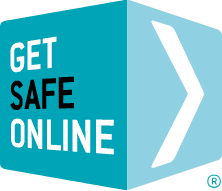The risks
- Your data could be shared with other websites and businesses.
- You may not end up receiving the best deal owing to the results not necessarily being listed in the best order for you, or some deals being excluded from the results.
- Some websites may not be receptive to a complaint.
- In a small number of cases, the websites linked to from the price comparison site – or the site itself – may be bogus.
- Phishing emails requesting login and payment card details, claiming to be from price comparison websites, but actually from fraudsters.
Using price comparison sites safely
- Protect your data by checking the price comparison site’s terms and conditions dealing with data and privacy.
- If you do not want your personal information to be passed to other companies, ensure that you have the ability to ‘opt out’ of doing so on the website, for example by ticking a box to say that you do not give your consent for your information to be shared.
- Make the comparison by requesting the results which are most helpful to you, for example not only by price but perhaps the excess on an insurance policy, or flexible terms with a loan.
- Check if your results are presented by relevance, price, or popularity and what the website says about how often it updates its information on prices and availability of goods.
- Use a number of different sites: not every deal is found on every site despite the presence of expressions such as ‘we’ve found the best deal’ or ‘we’ve searched the market’.
- Know who you are doing business with. Make sure that the site reveals the identity of the business (not just the name of the website) and their business address, both legal requirements.
The above advice also applies to any websites you are directed to by the price comparison site.
And always remember…
- Use strong passwords. Never reveal your website access or online payment passwords to anybody.
- If you think that your online payment account has been compromised, take action immediately. Check the site’s online help page.
- Be wary about clicking on links provided in unsolicited emails. For example, it is better to enter your bank’s website address into your browser directly, or use a bookmark that you created using the correct address.
- If you pay by payment card, remember that a credit card offers greater protection than with other methods in terms of fraud, guarantees and non-delivery.
- When paying either by online payment service or payment card, ensure that the link is secure, in two ways:
- There should be a padlock symbol in the browser window frame, which appears when you attempt to log in or register. Be sure that the padlock is not on the page itself … this will probably indicate a fraudulent site.
- The web address should begin with ‘https://’. The ‘s’ stands for ‘secure’.
- The above indicate only that the link between you and the website owner is secure, and ot that the site itself is authentic. You need to do this by carefully checking the address for subtle misspellings, additional words and characters and other irregularities.
- Always log out of sites into which you have logged in or registered details. Simply closing your browser is not enough to ensure privacy.
- Keep receipts.
- Check credit card and bank statements carefully after shopping to ensure that the correct amount has been debited, and also that no fraud has taken place as a result of the transaction.
- Ensure you have effective and updated antivirus/antispyware software and firewall running before you go online.
If you have queries or issues regarding a price comparison site
If you suspect that you have been directed to a dishonest or fraudulent website, report the incident to the price comparison website’s team.
If you think you have been a victim of fraud:
Report it to the police.
